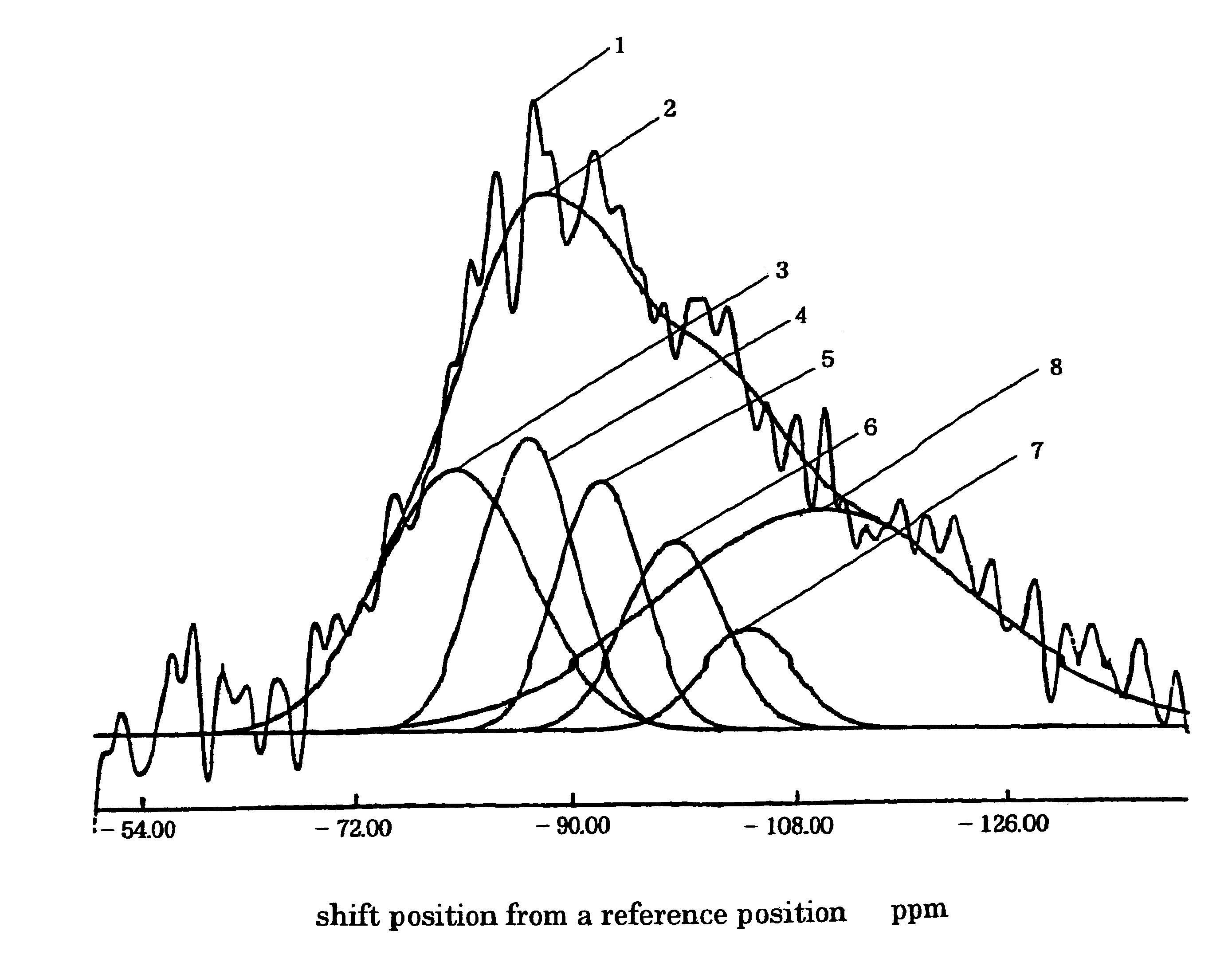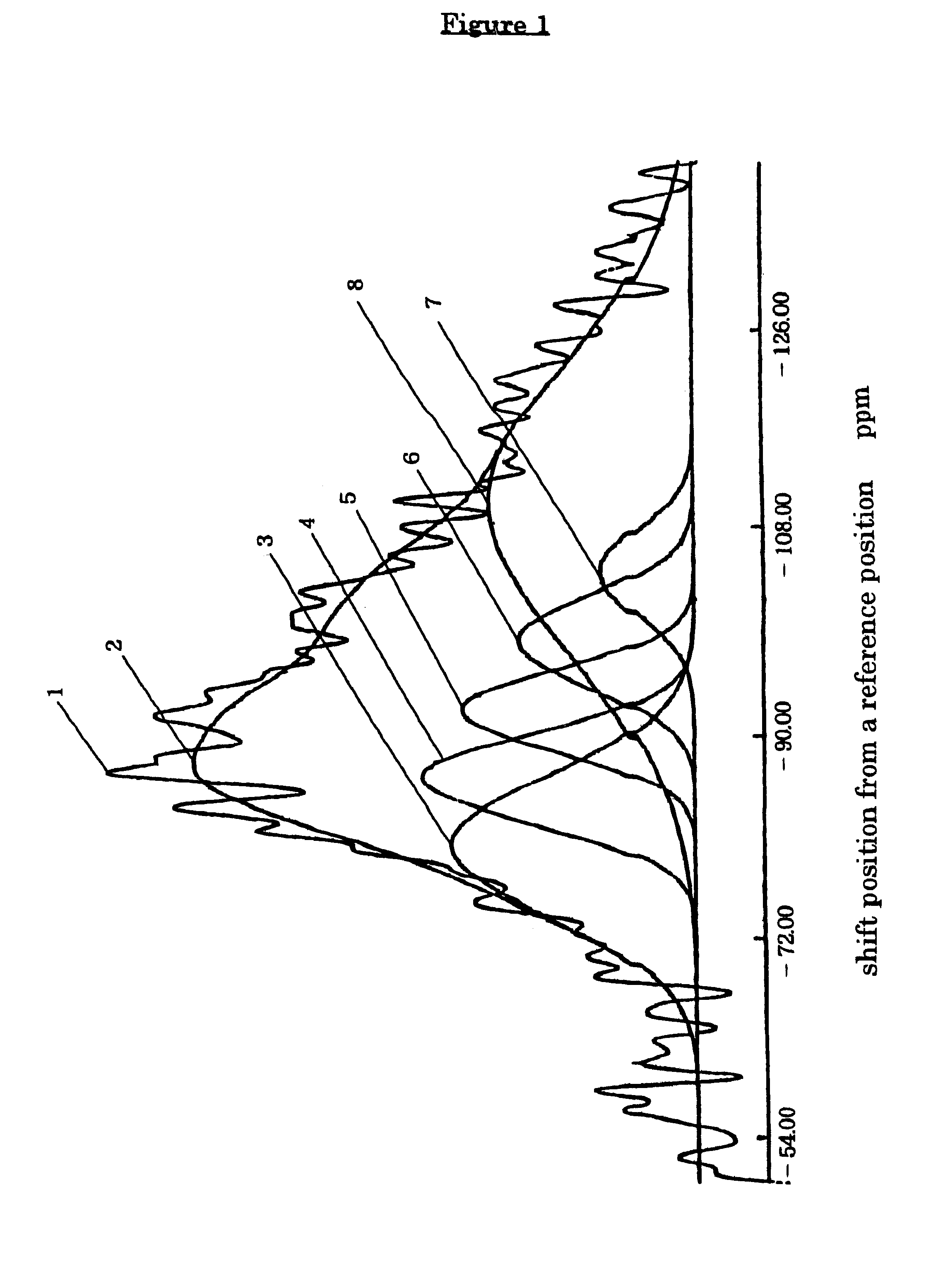Catalyst for hydrogenation treatment and method for hydrogenation treatment of hydrocarbon oil
a hydrogenation treatment and hydrocarbon oil technology, applied in the direction of catalyst activation/preparation, physical/chemical process catalysts, metal/metal-oxide/metal-hydroxide catalysts, etc., can solve the problem of insufficient hydrogenation activity
- Summary
- Abstract
- Description
- Claims
- Application Information
AI Technical Summary
Benefits of technology
Problems solved by technology
Method used
Image
Examples
example 1
3 liters of pure water were heated to 70.degree. C., and 220 g of sodium aluminate were dissolved therein to prepare an aqueous solution of sodium aluminate having a pH of about 12. Next, a solution of nitric acid was added over 25 minutes to adjust the pH of the solution to the desired pH (8.8-9.2). It was then aged at a temperature of 70.degree. C. for 0.5 hours to prepare an aqueous solution containing a precipitate (gel) of alumina hydrate. Next, an aqueous solution of sodium silicate (No. 3 water glass 49 g, pure water 200 g) was added over 21 minutes, where necessary adding nitric acid solution to adjust and maintain the pH of the obtained aqueous solution to about 9. This was then aged at a temperature of about 70.degree. C. for 0.5 hours to prepare a slurry liquid containing precipitate particles having a silica hydrate deposited on the surface of the alumina hydrate gel. This slurry liquid was then filtered and washed with an aqueous solution of ammonium carbonate until the...
example 2
Catalyst B was prepared in the same way as Example 1 except that nitric acid solution was added over 24 minutes to adjust the pH to the desired pH (8.8-9.2) instead of the step of adding nitric acid solution over 25 minutes to adjust the pH to the desired pH (8.8-9.2), and that an aqueous solution of sodium silicate (No.3 water glass 69 g, pure water 200 g) was added over 20 minutes instead of the step of adding the aqueous solution of sodium silcate (No. 3 water glass 49 g, pure water 200 g) over 21 minutes. The silica content in catalyst B was 16.4% by weight . Hydrotreatment of sample A was carried out using catalyst B under the above-described hydrotreatment conditions to test the desulfurization and denitrogenation activity of catalyst B. The physical properties of catalyst B (chemical composition, specific surface area, pore volume, .sup.29 Si-nuclear magnetic resonance analysis) and the results of the hydrotreatment test are shown in Table 2.
example 3
Catalyst C was prepared in the same way as Example 2 except that an aqueous solution of sodium silicate (No.3 water glass 69 g, pure water 200 g) was added over 33 minutes instead of the step of adding the aqueous solution of sodium silicate (No. 3 water glass 69 g, pure water 200 g) over 20 minutes. The silica content in catalyst C was 16.5% by weight. Next, hydrotreatment of a sample oil was carried out using catalyst C under the above-described hydrotreatment conditions to test the desulfurization and denitrogenation activity of catalyst C. The physical properties of catalyst C (chemical composition, specific surface area, pore volume, .sup.29 Si-nuclear magnetic resonance analysis) and the results of the hydrotreatment test are shown in Table 2.
PUM
| Property | Measurement | Unit |
|---|---|---|
| Fraction | aaaaa | aaaaa |
| Fraction | aaaaa | aaaaa |
| Fraction | aaaaa | aaaaa |
Abstract
Description
Claims
Application Information
 Login to View More
Login to View More - R&D
- Intellectual Property
- Life Sciences
- Materials
- Tech Scout
- Unparalleled Data Quality
- Higher Quality Content
- 60% Fewer Hallucinations
Browse by: Latest US Patents, China's latest patents, Technical Efficacy Thesaurus, Application Domain, Technology Topic, Popular Technical Reports.
© 2025 PatSnap. All rights reserved.Legal|Privacy policy|Modern Slavery Act Transparency Statement|Sitemap|About US| Contact US: help@patsnap.com



